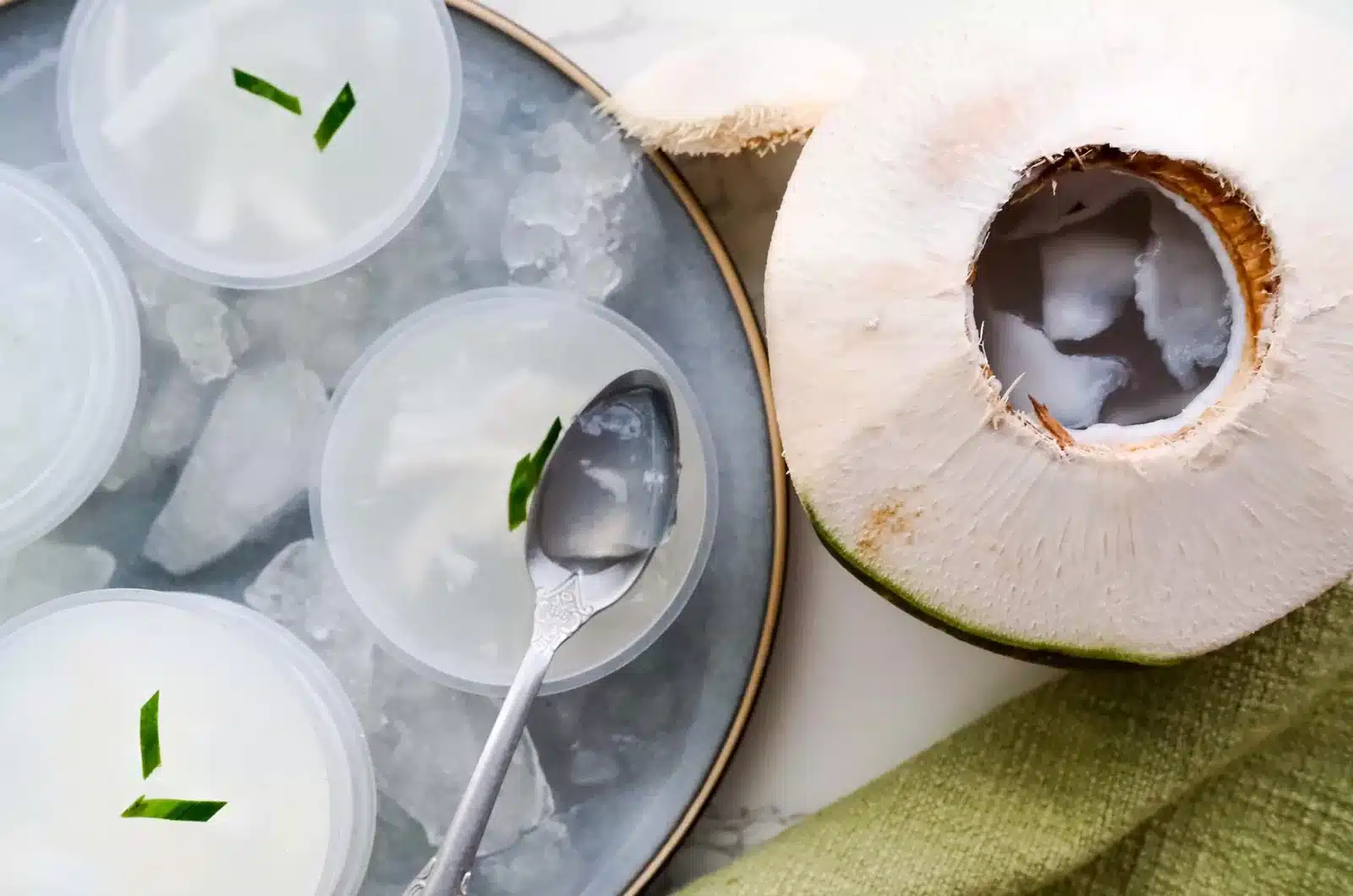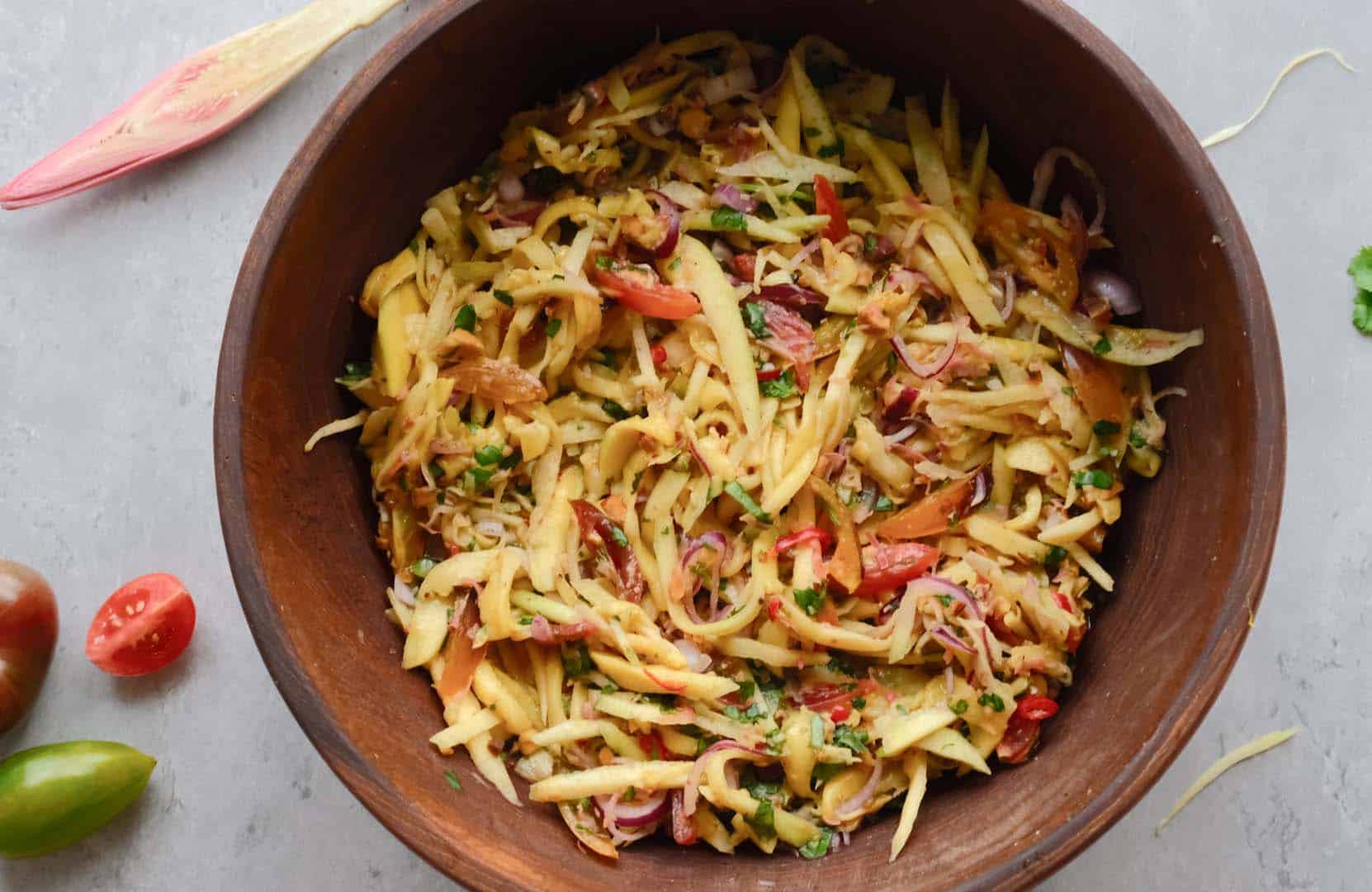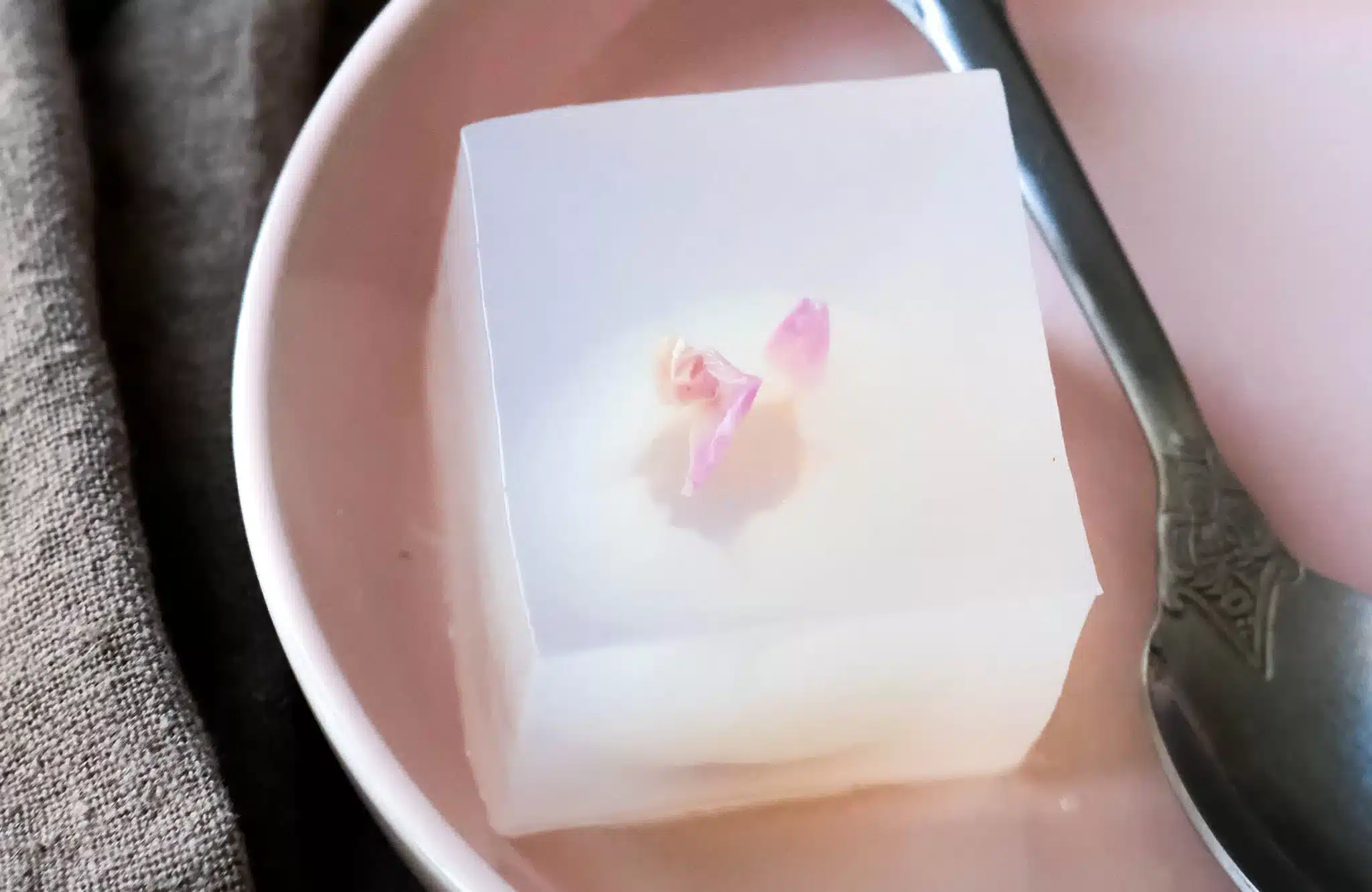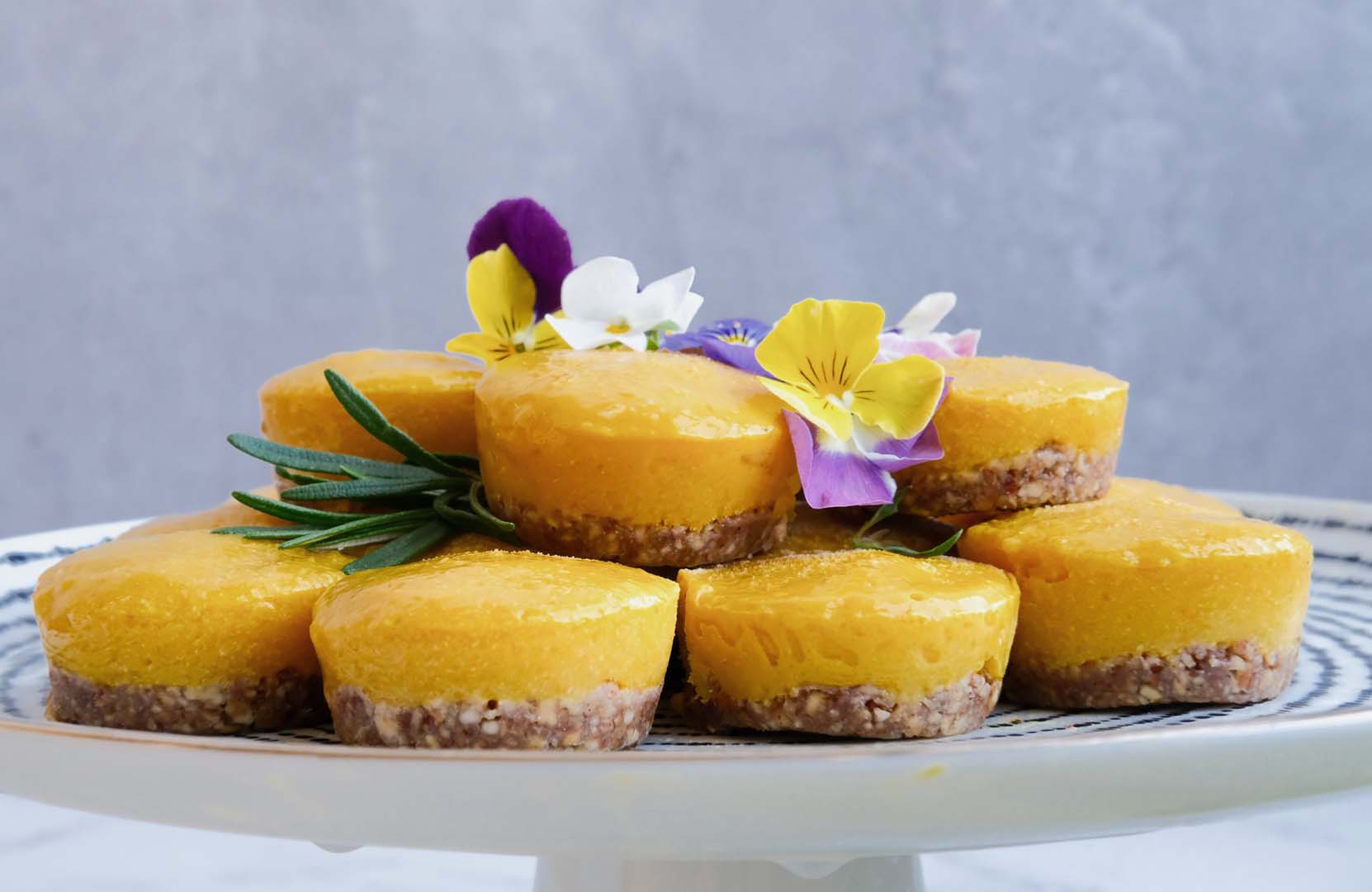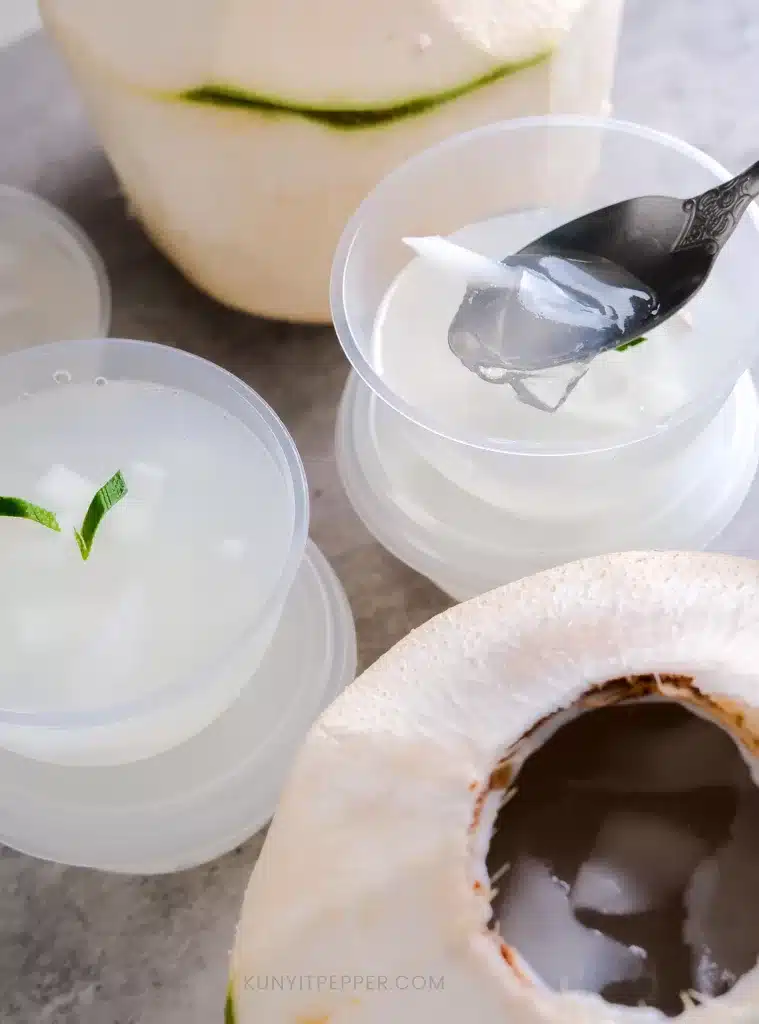
In the tropical regions of Southeast Asia, this clear coconut jelly is prized as a healthy yet satisfying light dessert that also quenches your thirst. Silky smooth and very soothing on the throat, it’s packed with natural electrolytes to help you feel refreshed and recharged.
If you’ve ever been to Thailand, Malaysia, or Singapore, you might have seen this fresh coconut water agar-agar jelly served in a coconut shell or a simple plastic cup. They are commonly sold in local restaurants, fruit stalls, Asian dessert restaurants, and even in supermarkets.
Table of Contents
- What to expect from this coconut jelly agar-agar
- What is agar-agar?
- Is this coconut jelly healthy?
- Ingredients to make clear coconut jelly agar agar
- How to make coconut jelly agar-agar recipe
- FAQ
- Other cold and refreshing recipes you might like
- Other Southeast Asian recipes with pandan
I’ve been making this cooling coconut jelly recipe since I was young. I even made it to sell at my mom’s restaurant! It was actually my first small business gig to earn extra bucks right after finishing high school. I still remember the proud moment when my mom came home and told me my coconut jelly was all sold out!
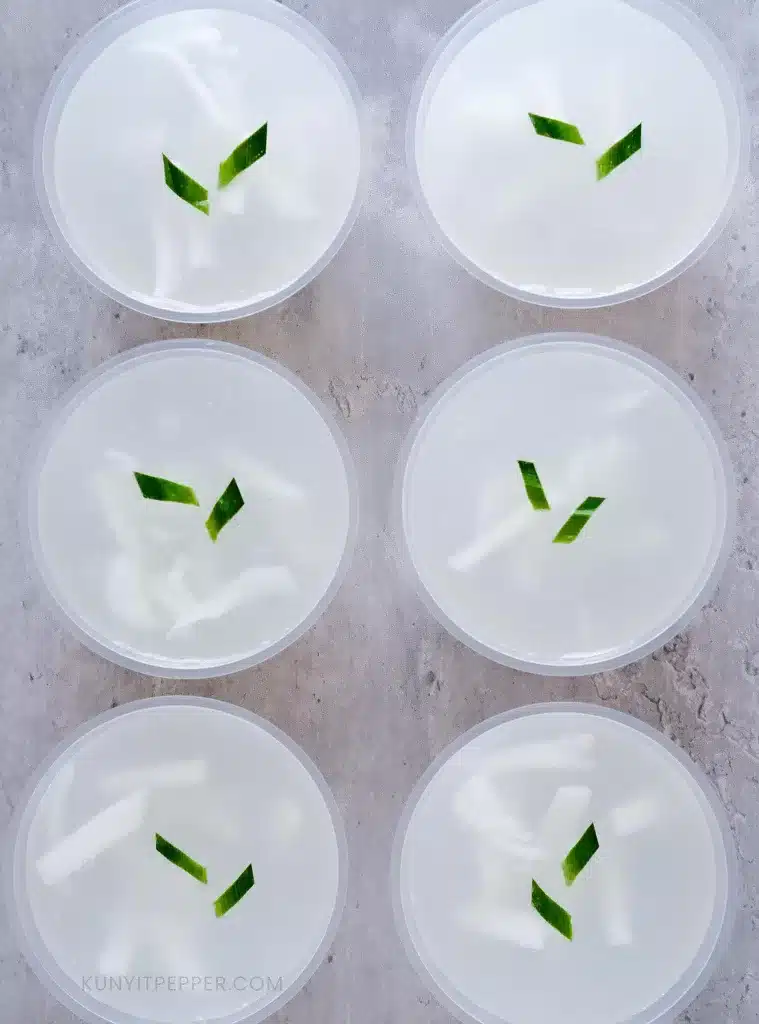
What to expect from this coconut jelly agar-agar
Texture
While you might’ve seen cubed or cut versions of coconut jelly, this clear coconut jelly is silky soft, it melts in your mouth effortlessly, almost like crème brûlée. That’s why it’s usually served in a container to help hold its shape.
Taste
Infused with pandan leaf, lightly sweetened with sugar and seasoned with a pinch of salt, this coconut jelly recipe enhances the natural flavor of coconut water in a soft jelly form without being overly sweet.
Whether you’re using agar powder or strips, you will see below an easy way to make clear coconut jelly while preserving the nutrients in coconut water.
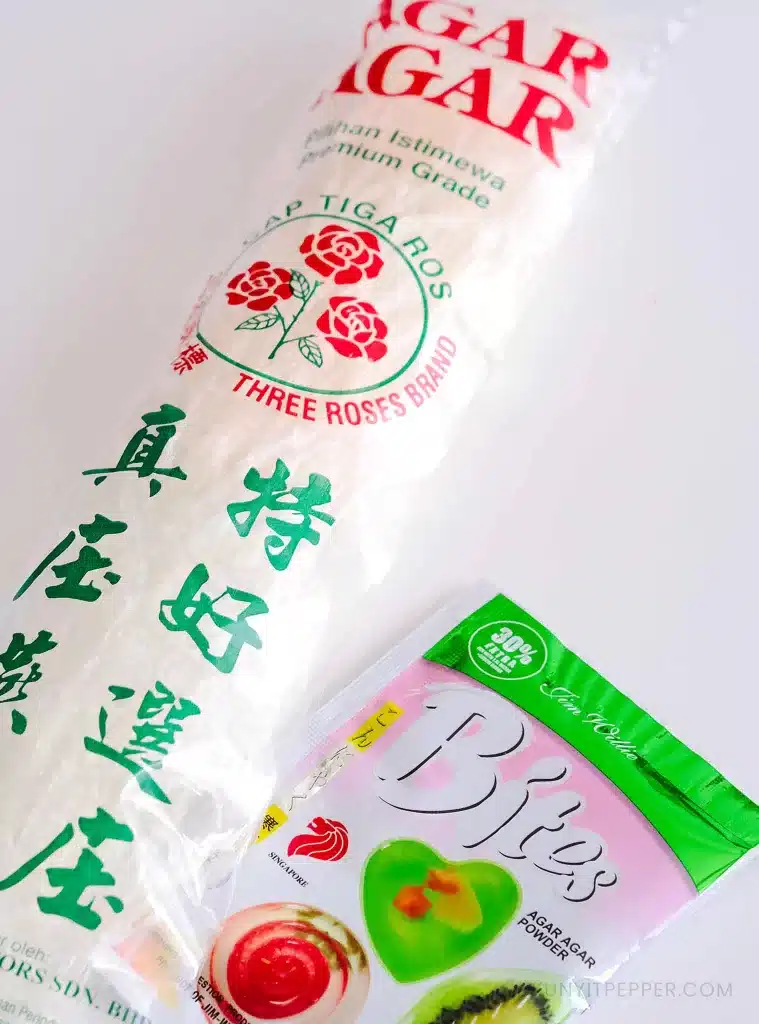
What is agar-agar?
Agar-agar is a Malay term for jelly. It’s a thickening and gelling agent made of red seaweed or algae. Originally derived from Japan, agar-agar is a plant-based gelatin commonly used in Asian cuisine. Agar or agar-agar is also known as a vegan gelatin substitute.
There are 2 versions of agar-agar, powder and strips, and you can find them on Amazon – Agar-agar powder
Is this coconut jelly healthy?
This clear coconut jelly agar agar recipe makes up 75% of fresh coconut water.
Fresh coconut water is not only naturally tasty but also rich in nutrients and antioxidants. Its electrolytes (sodium, potassium, and magnesium) are minerals that help regulate fluid balance in the body, making coconut water a great choice for hydration!
🥥 Coconut Water Quick Facts (1 cup)
- Carbs: 15 grams
- Sugar: 8 grams
- Calcium: 4% of the daily value (DV)
- Magnesium: 4% of the DV
- Phosphorus: 2% of the DV
- Potassium: 15% of the DV
Source USDA
Unlike coconut milk, coconut water is naturally low in calories with almost no fat. It also contains caffeic acid, which has been shown to have antioxidant properties that help protect cells from damage.
Coconut water is linked to lowering blood sugar levels, may help prevent kidney stones, and may support heart health. Note: These studies were conducted on animals, so while the results are promising, more research is needed in humans
Made with agar-agar — a plant-based gelatine that’s low in calories, fat, and carbs, this coconut jelly is a light dessert. It’s vegan, gluten-free, and can even be made sugar-free if you like!
Lightly infused with pandan (an ayurvedic leaf used in traditional medicine), this coconut water agar-agar isn’t just aromatic, it may also carry some of its anti-inflammatory benefits!
Compared to most commercial jellies packed with artificial flavoring and coloring, this coconut jelly is a healthier option if you’re looking for something light, refreshing, and soothing.
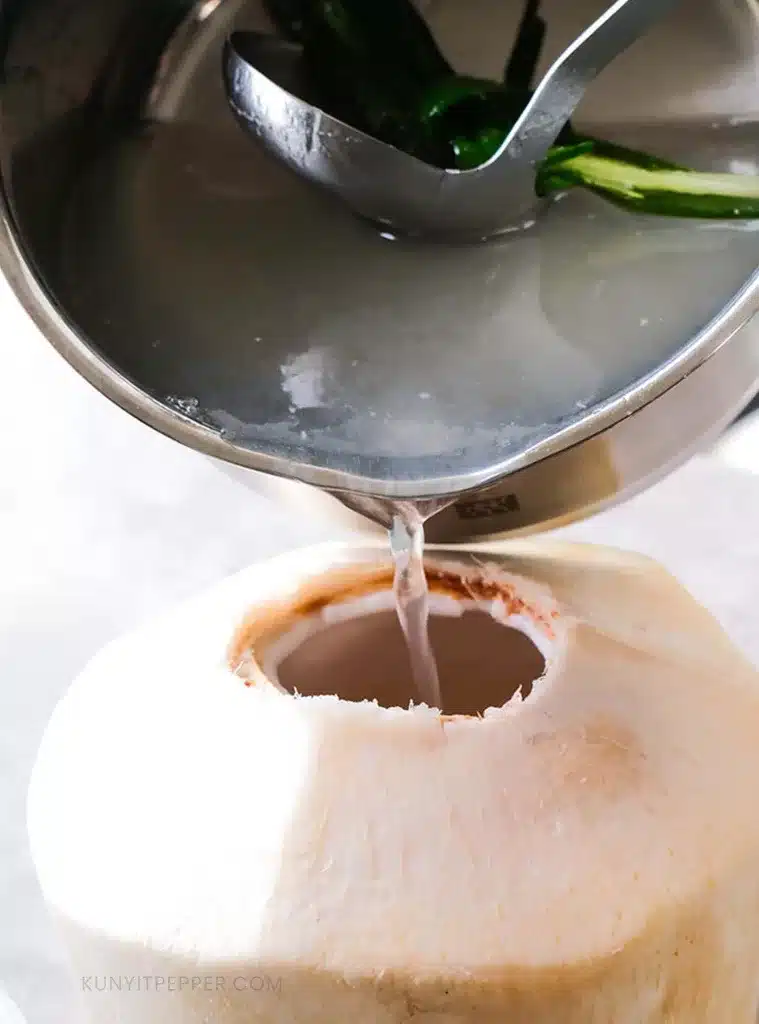
Ingredients to make clear coconut jelly agar agar
Fresh coconut water – If you can’t get fresh coconut water, try to find unsweetened one without any artificial flavoring. Coconut water is translucent, do not mistake coconut water for coconut milk.
Pandan leaf – The combination of coconut and pandan makes an irresistible aroma which very much defines the southeast asian dessert flavor, so I suggest not to skip it if you want it to be authentic. You will only need 1 pandan leaf, or substitute it with 1/2 tsp of pandan extract (the most natural you can get)!
Agar-agar is the main ingredient that solidifies the coconut water into the jelly I mentioned above. You can get it from asian markets or Amazon. Whether you choose agar-agar powder or strips, make sure it’s unflavored with no artificial coloring.
Water will be used to dissolve the agar-agar during cooking. Agar-agar needs to be boiled, whether you’re using the strip or powder version. Using water instead of coconut water helps retain the nutrients in the coconut water.
Sugar is traditionally included in both commercial and homemade coconut jelly. If you enjoy the natural sweetness of coconut water more, you may reduce or skip it.
Salt – Just a pinch of salt as a natural flavor enhancer.
How to make coconut jelly agar-agar recipe
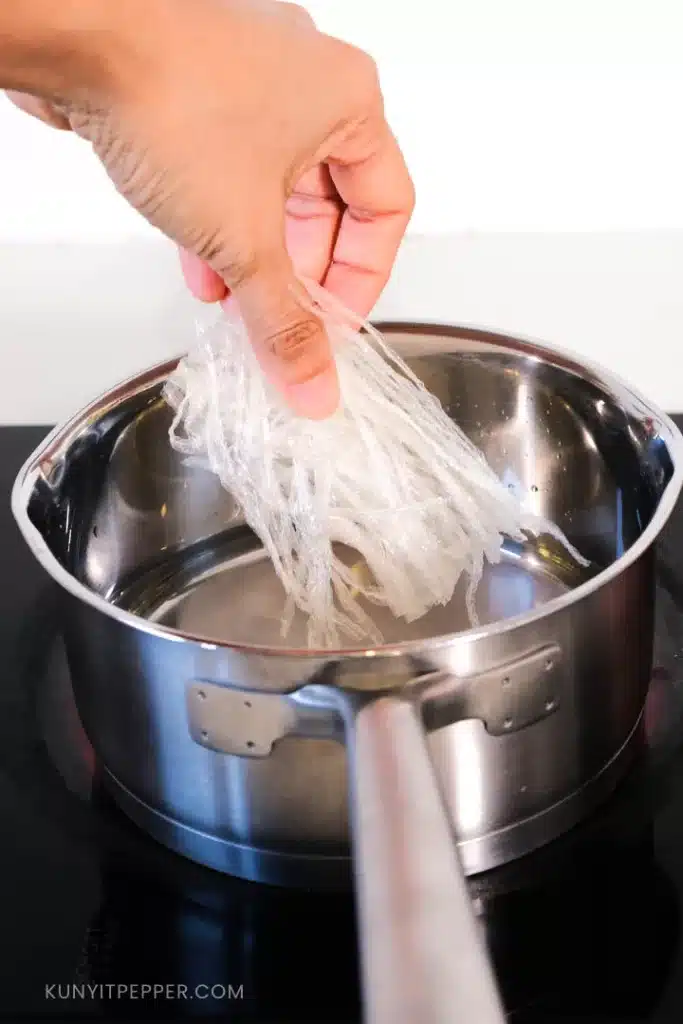
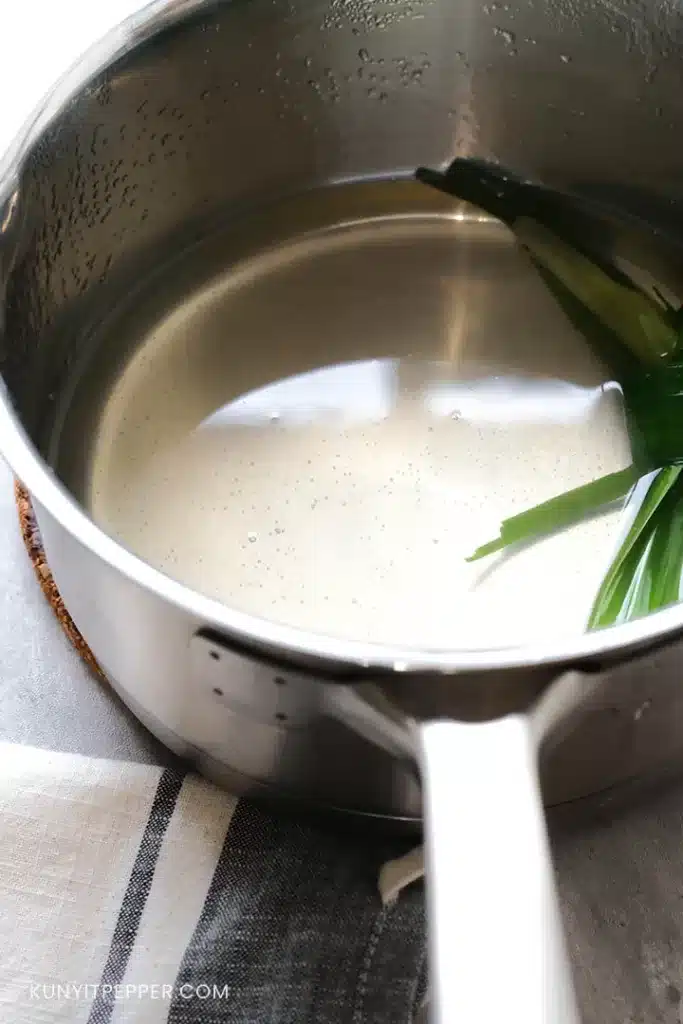

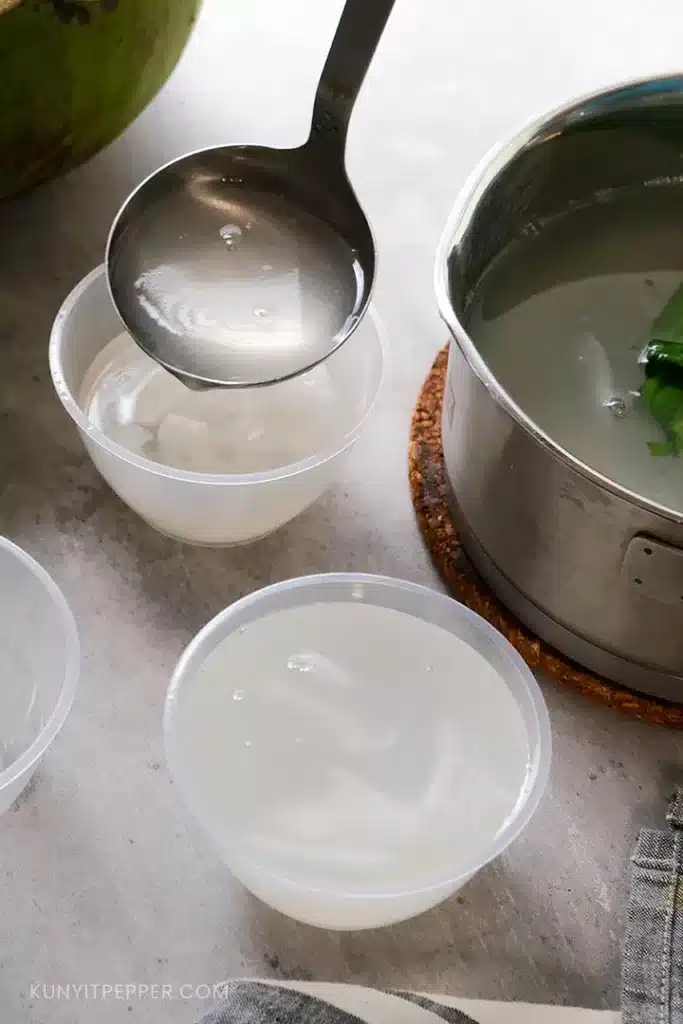

FAQ
What is the ratio of agar-agar to liquid when making coconut jelly?
For a soft coconut jelly, I find that a ratio of 4g or 2 tsp of agar-agar powder to 1000 mL of liquid (coconut water + water) works best. For a firmer texture, use 6g of agar-agar to 1000 mL of liquid.
How long does coconut jelly last in the fridge?
Coconut jelly can stay up to 1 week in the fridge.
What is coconut jelly good for?
Coconut jelly (especially the clear ones) makes a cold, nutrient-rich, hydrating, sweet dessert on a hot sunny day. Coconut water is packed with potassium, an important mineral that helps regulate fluid balance, nerve signals, and muscle contractions. That makes clear coconut jelly both a refreshing choice to quench your thirst and a nutritious dessert.
Is agar agar the same as jelly?
Yes, agar-agar is the Malay term for jelly. Agar or agar-agar is a gelling and thickening agent derived from red seaweed or algae. Originally from Japan, this plant-based gelatin has been widely used in Southeast Asia, especially in Malaysia, due to its ability to hold up well in hot weather.
Other cold and refreshing recipes you might like
- Mango Pomelo Sago With Basil Seed
- Cold Cucumber Soup
- Anti-Inflammatory Frozen Mango Tart
- Indonesian Sweet Fermented Rice
- Sweet Fermented Purple Rice
Other Southeast Asian recipes with pandan
- Coconut Milk Sago Dessert With Root Vegetables – Bubur Cha Cha
- Black Rice Pudding
- Coconut Milk Mung Bean Dessert With Corn
Clear Coconut Jelly Recipe with Agar-Agar
2-4
Serving8
minutes320
kcal4
hoursAuthentic Southeast Asian coconut jelly agar-agar recipe made to retain the nutrients. Smooth, soothing, and refreshing, this clear coconut jelly is a light, thirst-quenching dessert perfect to enjoy on a hot sunny day!
Ingredients
800 ml Coconut Water, unsweetened (3 cups) – If buying the fresh ones that come with meat, strain them and cut the meat into smaller pieces.
1 cup Water
5 g of agar agar strips or 2 tsp agar agar powder /(unflavored & colourless)
3 tbsp Sugar – (Omit or reduce if you like it naturally sweet)
1 pinch Salt
1 piece Pandan leaf (knot)
Directions
- In a saucepan or pot, mix water, agar-agar powder or strips, pandan leaf, sugar, and salt. If using agar-agar powder, stir to separate the powder from clumping. Bring to a boil over medium heat while constantly stirring them with a ladle.
- Once the water slightly thickens and the agar-agar powder is fully dissolved and no longer visible, turn off the heat and move the pot away from the stove to stop the cooking.
- Add coconut water into the pot and stir well. You can discard the pandan leaf.
- Pour the mix into individual containers or back into the coconut shell from which you used the water. Cover the containers or coconut shells and leave them to chill in the refrigerator for at least 4 hours.
Notes
- Once you mix the coconut water and agar-agar water, immediately pour them into containers or back into the coconut shell. The agar-agar thickens quite fast at room or cold temperatures.
Nutrition Facts
- Serving Size: 250g
- Total number of serves: 4
- Calories: 80kcal
- Fat: 0g
- Saturated Fat: 0g
- Trans Fat: 0g
- Polyunsaturated Fat: 0g
- Monounsaturated Fat: 0g
- Cholesterol: 0mg
- Sodium: 120mg
- Potassium: 310mg
- Carbohydrates: 19g
- Fiber: 1g
- Sugar: 16g
- Protein: 0g
- Vitamin A: 0IU
- Vitamin C: 18mg
- Calcium: 30mg
- Iron: 4mg
- Vitamin D: 0mg
- Vitamin E: 0mg
- Vitamin K: 0mg
- Thiamin: 0.1mg
- Riboflavin: 0mg
- Niacin: 0mg
- Vitamin B6: 0mg
- Vitamin B12: 0mg
- Folate: 0mg
- Biotin: 0mg
- Pantothenic Acid: 0mg
- Phosphorus: 10mg
- Iodine: 0mg
- Magnesium: 10mg
- Zinc: 0mg
- Selenium: 0mg
- Copper: 0.02mg
- Manganese: 0.4mg
- Chromium: 0mg
- Molybdenum: 0mg
- Chloride: 0mg


